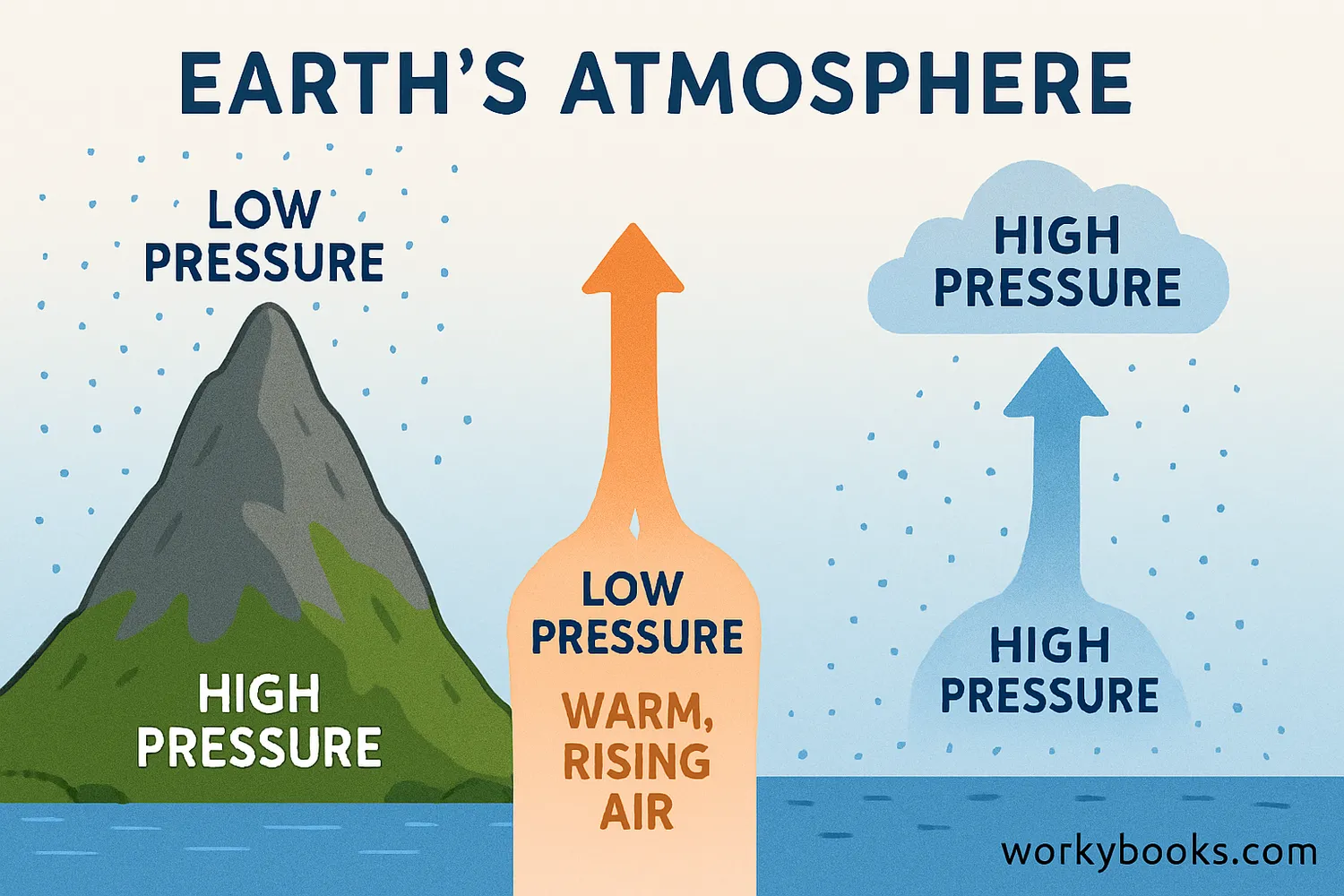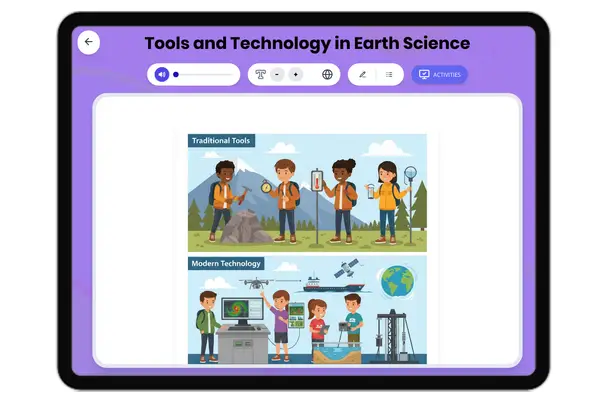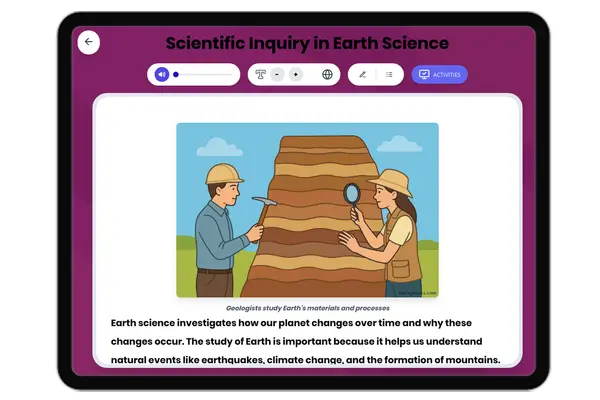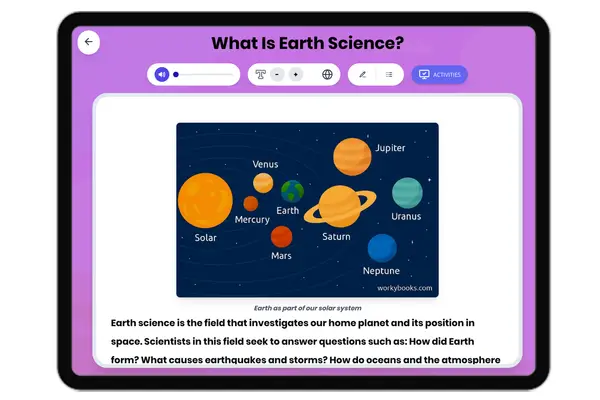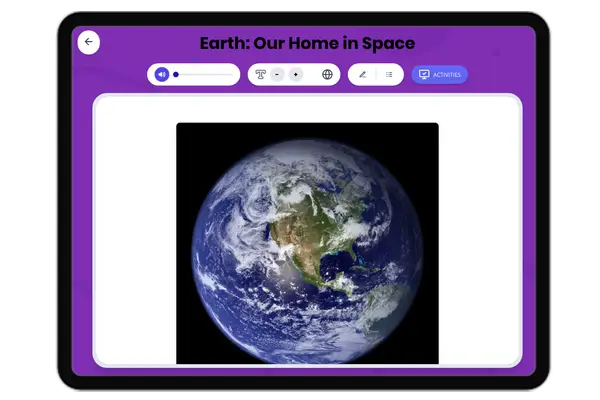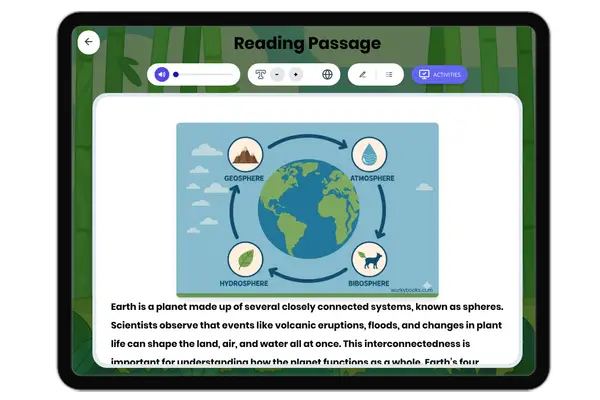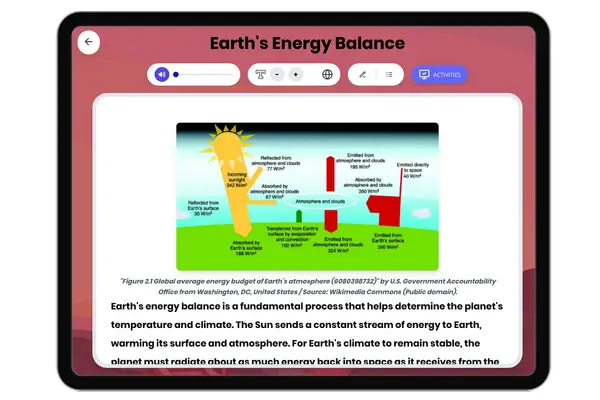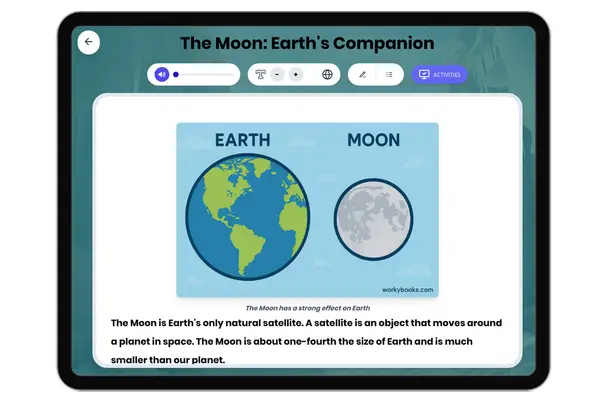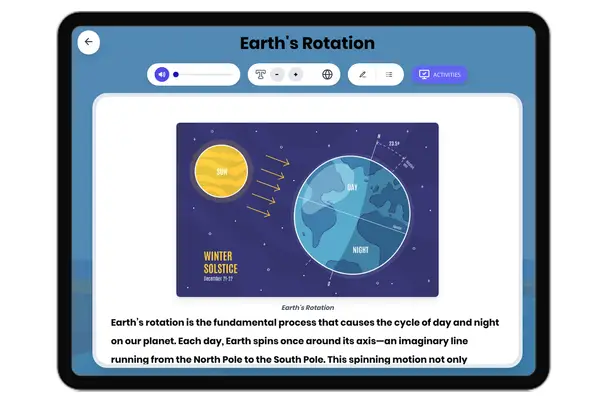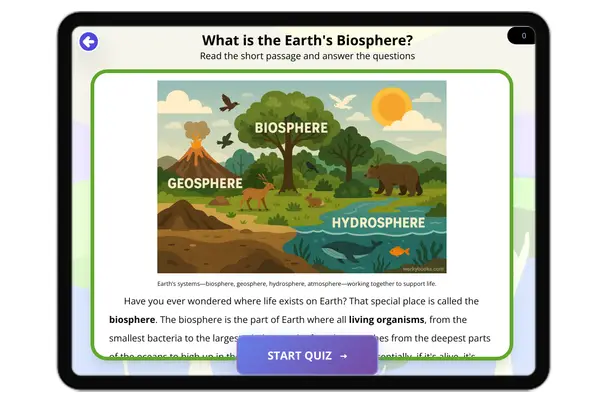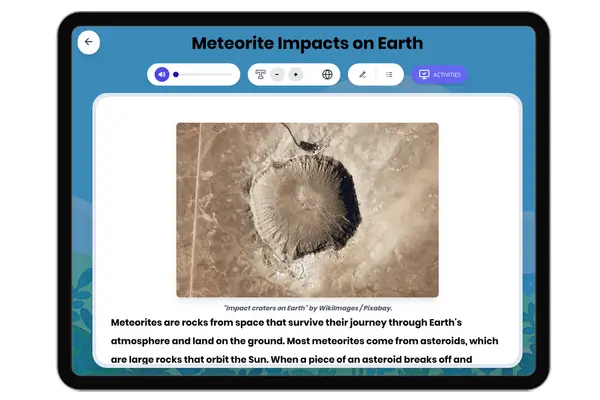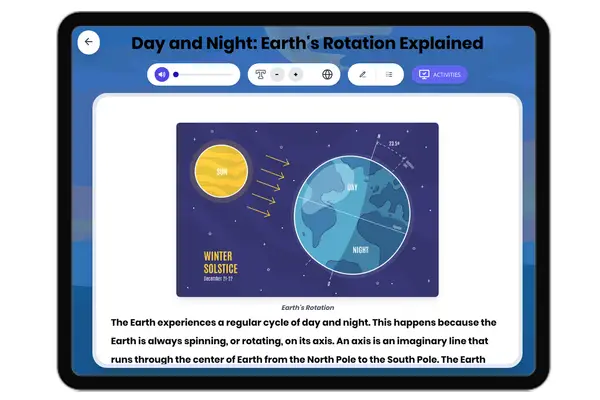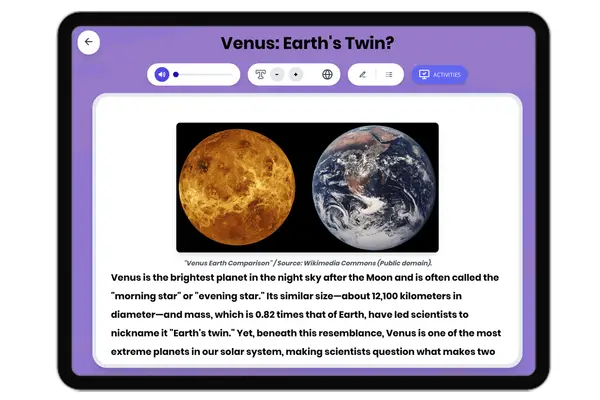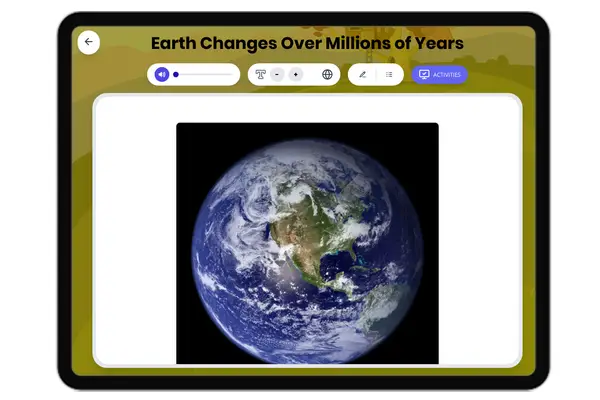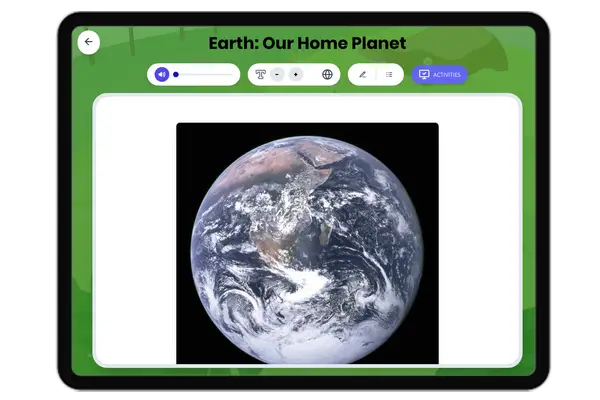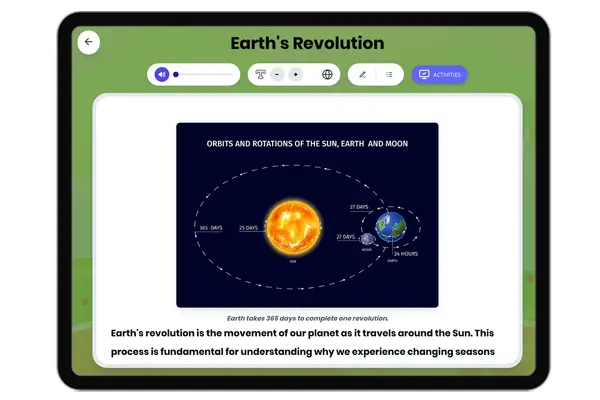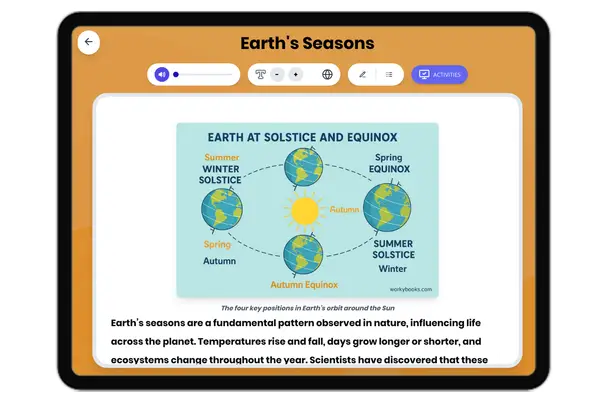What Causes Air Pressure? — Reading Comprehension
Premium Resource
Grades
- 3
- 4
- 5
- 6
- 7
- 8
PRINT+DIGITAL RESOURCE
This learning resource is available in interactive and printable formats. The interactive worksheet can be played online and assigned to students. The Printable PDF version can be downloaded and printed for completion by hand.
About This Reader
"This engaging science passage for middle school students explains the concept of air pressure. It covers the fundamental cause of air pressure—the weight of the atmosphere—and explores the key factors that influence it: altitude and temperature. Students will learn how these factors lead to the creation of high and low-pressure systems, which in turn drive weather patterns like wind. The text also connects the concept to real-world applications, such as why breathing is difficult at high altitudes and how meteorologists use barometers to forecast weather. The passage is designed to align with NGSS standards related to Earth's systems and physical science, providing a solid foundation for understanding atmospheric phenomena."
Perfect For:
👩🏫 Teachers
- • Reading comprehension practice
- • Auto-graded assessments
- • Literacy skill development
👨👩👧👦 Parents
- • Reading practice at home
- • Comprehension improvement
- • Educational reading time
🏠 Homeschoolers
- • Reading curriculum support
- • Independent reading practice
- • Progress monitoring
Reading Features:
📖
Reading Passage
Engaging fiction or nonfiction text
❓
Comprehension Quiz
Auto-graded questions
📊
Instant Feedback
Immediate results and scoring
📄
Printable Version
Download for offline reading
🔊
Read Aloud
Voice-over with word highlighting



